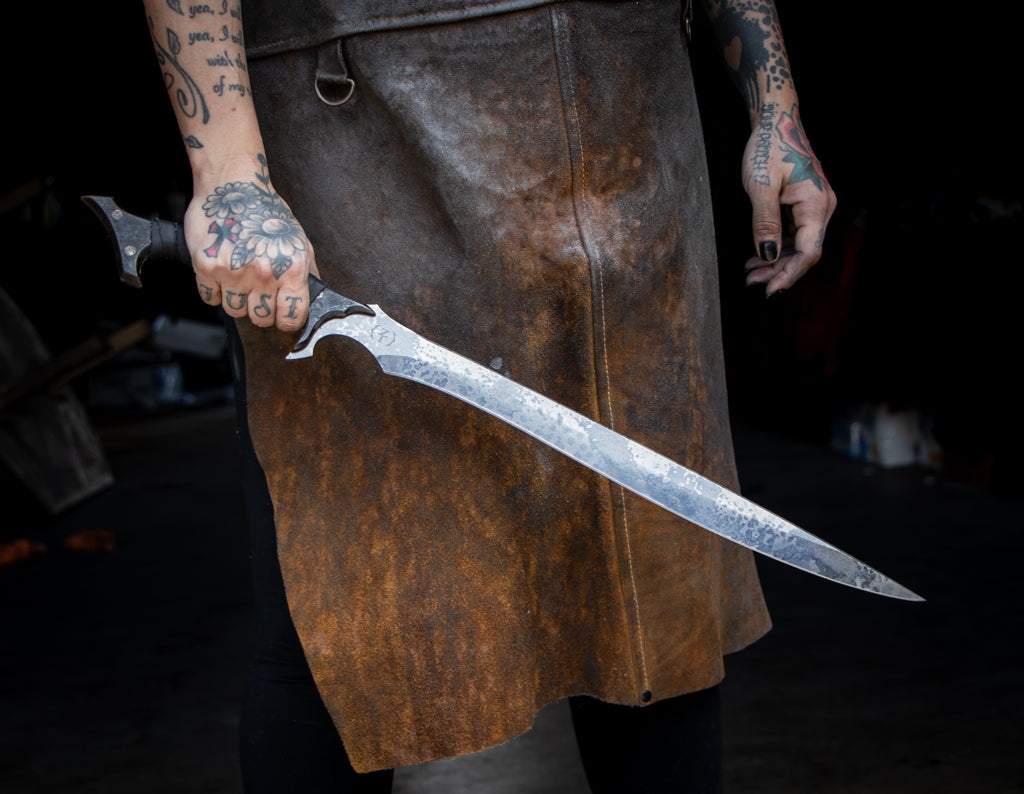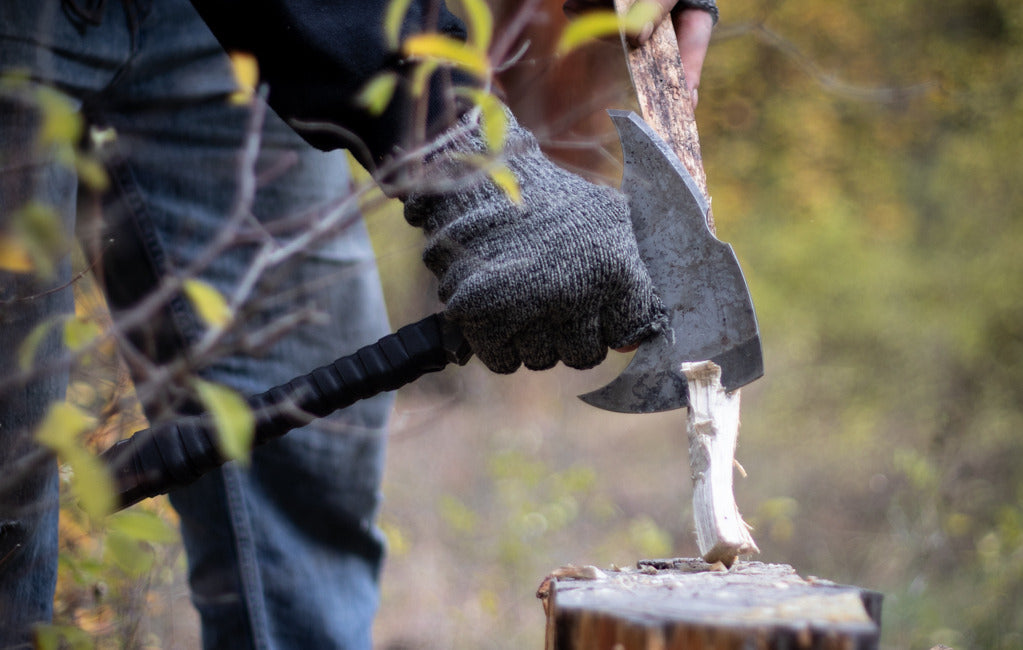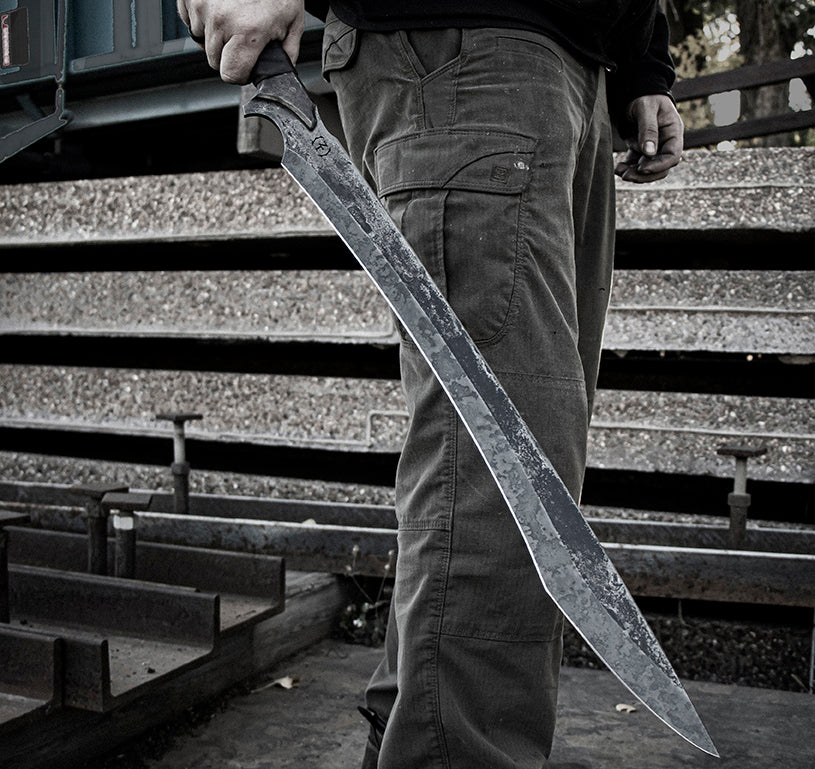Best Steel For Swords: The Ultimate Guide to Choosing Blade Steel

The Short Answer: The best steel for swords balances toughness, edge retention, and maintenance ease. 80CrV2 spring steel stands out as the superior choice for functional swords due to its exceptional impact resistance and field-proven reliability.
Choosing the right steel could mean the difference between life and death in a survival scenario. In combat or survival situations, sword performance depends heavily on steel choice. Modern sword buyers face countless steel options, each promising superior performance. However, decades of testing with spring steels and extensive modern use of 80CrV2 show the reliability that functional sword users demand.
What Makes a Steel "Good" for Swords?
Understanding steel performance requires examining four primary characteristics that determine how a sword performs in actual use. The balance between these factors separates functional blades from wall hangers.

Toughness and Impact Resistance
Toughness measures a steel's ability to absorb energy without fracturing. Functional swords must withstand impacts that would destroy display pieces. This property becomes most important during heavy cutting work, where chopping through thick materials puts tremendous stress on the blade spine and edge. Combat applications create blade-on-blade contact that generates shock waves capable of shattering brittle steels. Survival situations demand reliability because users cannot afford catastrophic blade failure when tools are limited.
Edge Retention and Sharpness
A sword that cannot hold a sharp edge becomes useless quickly. Edge retention depends on the steel's hardness and carbide structure. The best sword steel maintains cutting ability through extended use while remaining practical to resharpen in field conditions. Professional users need blades that perform consistently without requiring exotic maintenance equipment.
Ease of Sharpening and Maintenance
Sword steel must balance performance with practical maintenance needs. Complex super steels may offer theoretical advantages, but become liabilities when specialized sharpening equipment is unavailable. The best steel for swords allows users to maintain their blades with basic tools like ceramic or diamond rods.
Field maintenance capabilities become particularly important during extended use periods. Users need steel that responds predictably to sharpening attempts without requiring exotic abrasives or specialized techniques.
Corrosion Resistance
While corrosion resistance matters for long-term storage, carbon steels provide superior performance when properly maintained. The trade-off between maximum performance and convenience determines the right choice for each user's needs.
Popular Steels Used in Modern Sword Making
Spring Steels: The Proven Performers
Spring steels like 5160 and 9260 earned their reputation through automotive and industrial applications requiring extreme durability. These steels offer excellent toughness and reliable edge retention, making them trusted choices for functional sword makers who demand proven performance.
5160 spring steel provides several advantages for sword applications:
-
Exceptional toughness: 5160's automotive heritage means it handles impact and shock loads exceptionally well.
-
Reliable performance: Decades of use in critical applications have proven 5160's dependability under stress.
-
Cost-effective manufacturing: The simpler chemistry allows for consistent heat treatment and reliable results.
High Carbon Steel Options
Steels like 1095 and 1060 represent traditional sword steel choices favored by historical swords and custom sword makers. High carbon content allows 1095 steel to achieve impressive sharpness and edge retention when properly heat-treated to the correct hardness.
Carbon steel drawbacks include:
-
Brittleness concerns: High carbon content can create brittle blades prone to chipping during heavy use.
-
Corrosion vulnerability: Plain carbon steels rust rapidly without constant maintenance.
-
Heat treatment challenges: Narrow hardening windows make consistent results difficult.
Stainless Steel Limitations for Functional Swords
Stainless steels like 440C offer corrosion resistance that appeals to collectors and casual users. However, these steels face fundamental limitations for serious sword applications where performance matters more than convenience.
Problems with stainless steel:
-
Reduced toughness: Chromium content necessary for corrosion resistance decreases impact resistance compared to carbon steels.
-
Difficult sharpening: Hard carbides make field maintenance challenging with basic tools, requiring specialized equipment.

Why 80CrV2 Steel Outperforms the Competition
Superior Toughness Through Smart Chemistry
80CrV2 steel achieves exceptional toughness through its carefully balanced composition. The 0.80% carbon content provides adequate hardness while maintaining ductility that prevents catastrophic failure. Low chromium improves hardenability while maintaining toughness at 80CrV2's composition.
The vanadium content sets 80CrV2 apart from simpler carbon steels and traditional spring steels. Vanadium forms small, hard carbides that refine the steel's grain structure. This refinement translates directly into improved impact resistance and edge stability during heavy use, making it ideal for both Japanese Katana applications and modern tactical designs.
Proven Heat Treatment Response
Professional blade makers choose 80CrV2 because it responds predictably to heat treatment processes. The steel type can reach 60 Rockwell hardness (HRC) for knives, but functional swords are typically tempered around the low-to-mid 50s HRC for toughness, delivering the perfect balance of hardness and durability.
This hardness range provides:
-
Excellent cutting ability: Hard enough to take and hold a sharp edge through extended cutting sessions without frequent maintenance.
-
Impact resistance: Soft enough to bend rather than break under shock loads that would shatter harder steels.
-
Consistent performance: Reliable hardening behavior produces uniform blade properties across the entire length.
Field Maintenance Advantages
80CrV2 steel sharpens easily with ceramic or diamond rods, making field maintenance practical for users without access to professional equipment. Unlike complex tool steels or stainless varieties, 80CrV2 responds well to simple sharpening techniques that any sword user can master with basic practice.

Real-World Performance and Tested Applications
Military and Survival Applications
80CrV2 is popular for swords, axes, and hard-use knives among professional users, including some military and survival communities. The steel's proven track record in demanding applications translates directly to sword performance, where failure is not an option.
Combat and survival advantages include:
-
Predictable behavior: Users know exactly how the steel will perform under stress without surprises during use.
-
Damage tolerance: Minor edge damage does not propagate into catastrophic failure that renders the blade useless.
-
Repair capability: Field repairs are possible with basic tools and techniques available to most users.
Martial Arts and Training Applications
Many practitioners choose 80CrV2 for sharp cutting practice. Blunt training swords more commonly use 51CrV4 or 5160 steel types. The steel's durability allows for realistic contact training while its sharpening ease supports regular maintenance schedules required for active use.
Modern sword applications demand blades that perform reliably whether cutting test materials, participating in competitions, or preparing for the apocalypse. 80CrV2 steel delivers consistent performance across these applications while remaining affordable and maintainable.

Proven Performance in Modern Times
Unlike historical swords that used whatever steel was available in the Middle Ages, from early carbon steel to Damascus steel and wootz steel variations, modern steel makers can choose from the best materials available. High-quality modern swords like The Belmont and Deuce III demonstrate how 80CrV2 excels in real-world applications.
Zombie Tools: Your Partner in Superior Sword Steel
When your life depends on blade performance, theoretical advantages mean nothing compared to proven reliability. Professional users choose tools they can trust, which explains why discerning sword buyers increasingly turn to 80CrV2 steel for serious applications where failure is not acceptable.
We have spent over a decade perfecting the heat treatment and geometry of both 80CrV2 and 5160 spring steel blades. Every sword undergoes precise heat treatment to achieve 55 Rockwell hardness, striking the optimal balance between edge retention and toughness that separates functional tools from decorative pieces.
Our full-tang construction and battle-ready design philosophy ensure that each blade performs when it matters most. Crafted in Missoula, Montana, using entirely American-sourced materials, our blades combine modern sword-making excellence with traditional craftsmanship values.
From the versatile Zakasushi to the commanding D'Capitan Sabre, Zombie Tools' sword lineup demonstrates what premium steel can achieve when properly executed by master craftsmen. These blades have proven themselves for serious survival applications, earning the trust of users who demand reliability when it matters most.
Experience the difference that superior steel makes. Check out our full collection of blades and discover what true performance looks like.
Frequently Asked Questions
What hardness should sword steel be for optimal performance?
Most functional swords land around ~50–56 HRC. Zombie Tools heat treats their blades to 55 HRC, which provides adequate hardness for edge retention while maintaining enough toughness to prevent chipping or breaking during use.
How do I maintain carbon steel sword blades?
Keep the blade clean, dry, and lightly oiled. Wipe down after use, especially if cutting organic materials. For long-term storage, apply a thin coat of oil and store in a dry environment away from moisture.
Can stainless steel work for functional swords?
Possible, but many stainless steel formulations trade toughness for corrosion resistance. For impact-heavy blades like functional swords, carbon steel blade construction and spring steels are preferred over stainless steel swords where maximum performance matters most.
What makes spring steel good for swords?
Spring steels combine adequate hardness with exceptional toughness. Their automotive origins mean they're designed to handle repeated shock loads without failure, making them ideal for sword applications where reliability matters most.
How often should I sharpen my sword?
Frequency depends on use, but inspect the edge after each cutting session. Touch up with ceramic rods as needed, and perform full sharpening when the edge no longer responds to light maintenance.



